(432) The year-end grand purification
文字数 3,699文字
(I should have posted this diary at the end of last year, 2023. Sorry for the late post.)
Osugi Shrine is in Aba, Inashiki City, Ibaraki Prefecture. It is the headquarters of approximately 670 Osugi Shrines in the Kanto and Tohoku regions. It is affectionately known as “Ambasama” and is visited by 500,000 people annually. ”Ambasama'' refers to a giant cedar that used to be a landmark, but it was destroyed in a fire and only the name remains.
The year-end grand purification(年越しの大祓) is an event held on Dec. 31st to exorcise the year's impurities. At this time, some shrines set up grass rings (茅の輪、ちのわ)just like they do on June 30th. Osugi Shrine also has a grass ring, so we went there to purify ourselves.
I wrote about the exorcism in chapter 346, so please refer to that chapter for the manner of passing through the grass ring.
Osugi Shrine is said to have been built in 767. It became famous during the Edo period thanks to a priest named Tenkai(天海).
Tenkai(1536-1643) was a high priest of the Tendai sect (天台宗) in the early Edo period, and as a close aide to Tokugawa Ieyasu, he was deeply involved in the imperial court and religious policies of the early Edo shogunate.
He presided over Tokugawa Ieyasu's funeral and decided on Ieyasu's divine name as ”Tosho Daigongen(東照大権現).''
During the Edo period, Tenkai opened Kaneiji(寛永寺), the family temple of the Tokugawa family, in Ueno, and Toshogu(東照宮), Ieyasu's mausoleum, in Nikko.
Tenkai placed Annonji Temple (currently Osugi Shrine) under the direct control of Toshogu Shrine. Osugi Shrine looks like Nikko Toshogu Shrine, so it is nicknamed "Ibaraki's Nikko Toshogu Shrine" and is similarly gorgeous.
Marco Polo (1254-1324), an Italian merchant and adventurer, published "The Travels of Marco Polo''. In the book, he wrote that Zipangu (Japan) produced a huge amount of gold, that palaces and private houses were made of gold, and that the floors were covered with thick gold.
After reading this book, Columbus set out on a voyage to find Zipangu and discovered America. The Zipangu that Columbus imagined may have been something like Osugi Shrine.
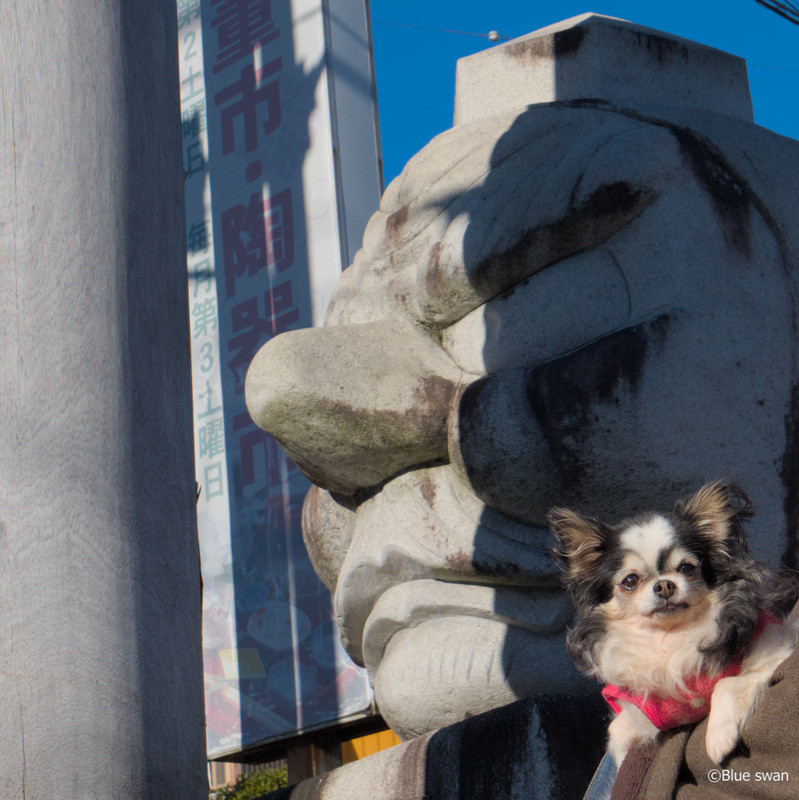
① This is “Negai Tengu”. ”Tengu refers to a long-nosed goblin, one of Japan's mythological creatures. “Negai” means your wish.
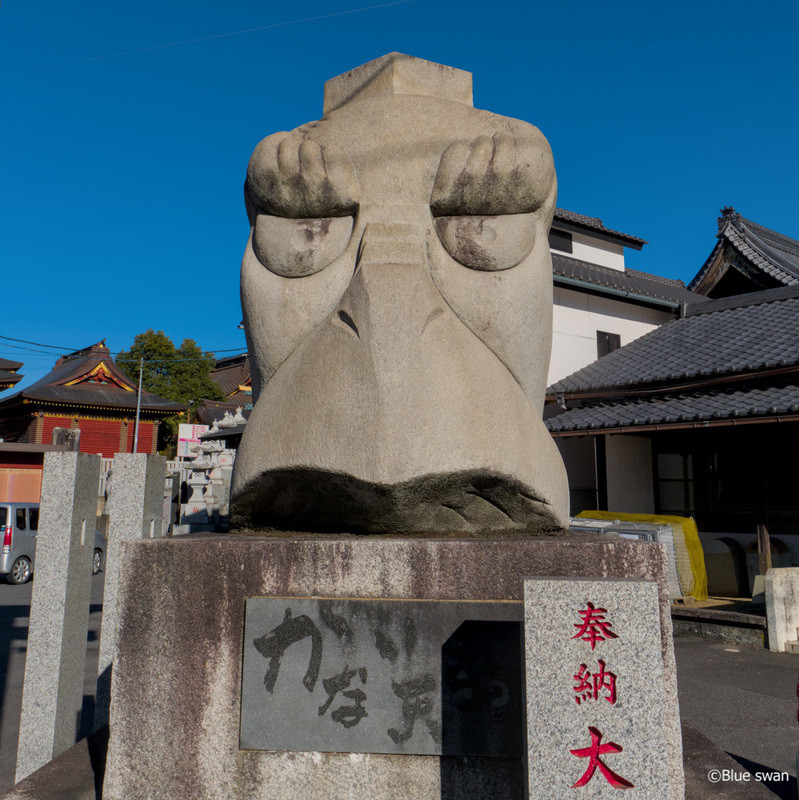
②This is “Kanae Tengu', which means that this Tengu will make your wish come true.
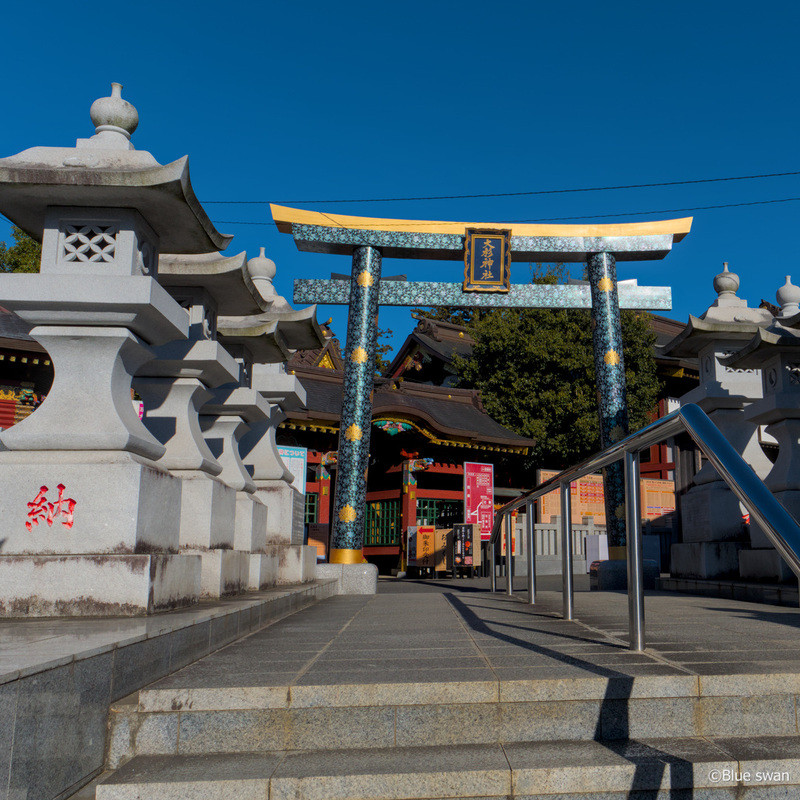
③ This is the second torii gate.

④ I’m standing next to ”Daikokuten”, who is known in Japan as a god of good harvest, good luck, career advancement, and improved financial fortune.
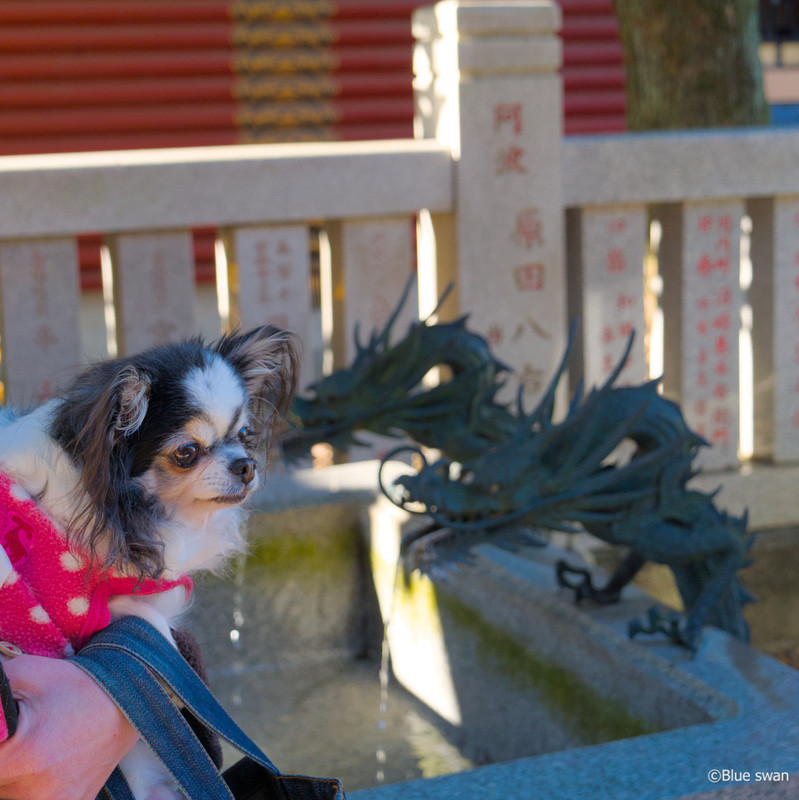
⑤ I am in front of the chozuya(手水舎).

⑥ The grass ring (Chinowa) has come into view.

⑦ I am in front of the grass ring.
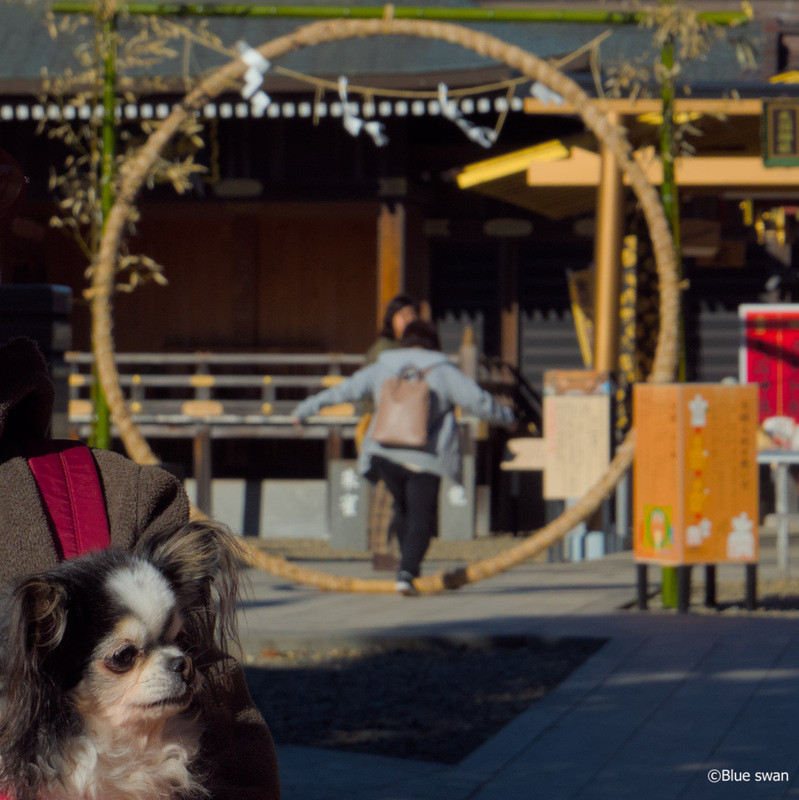
⑧ I asked Mom to carry me.
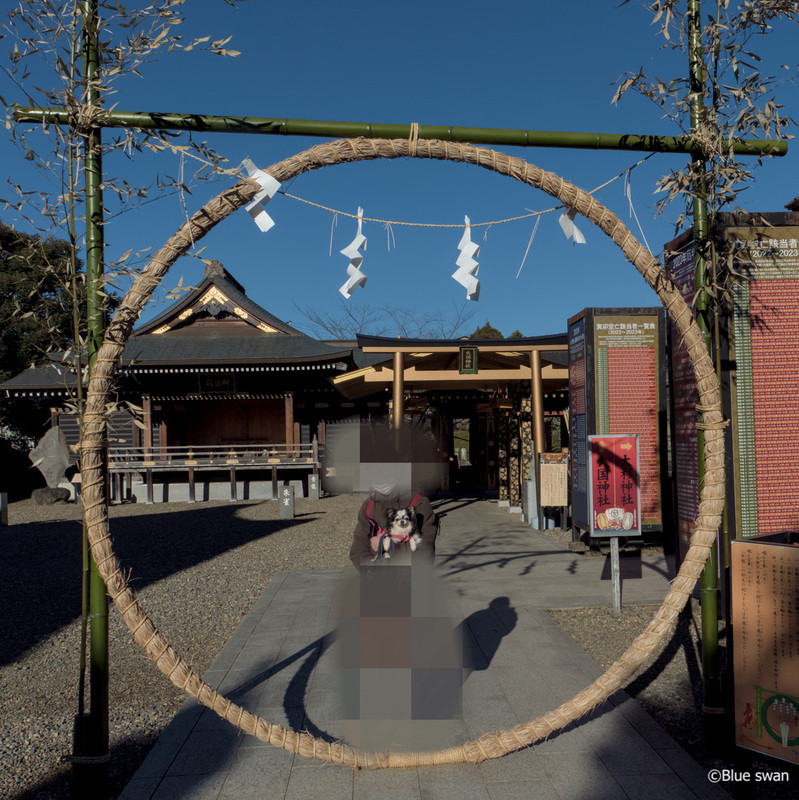
⑨ I’m passing through the grass ring three times with Mom.
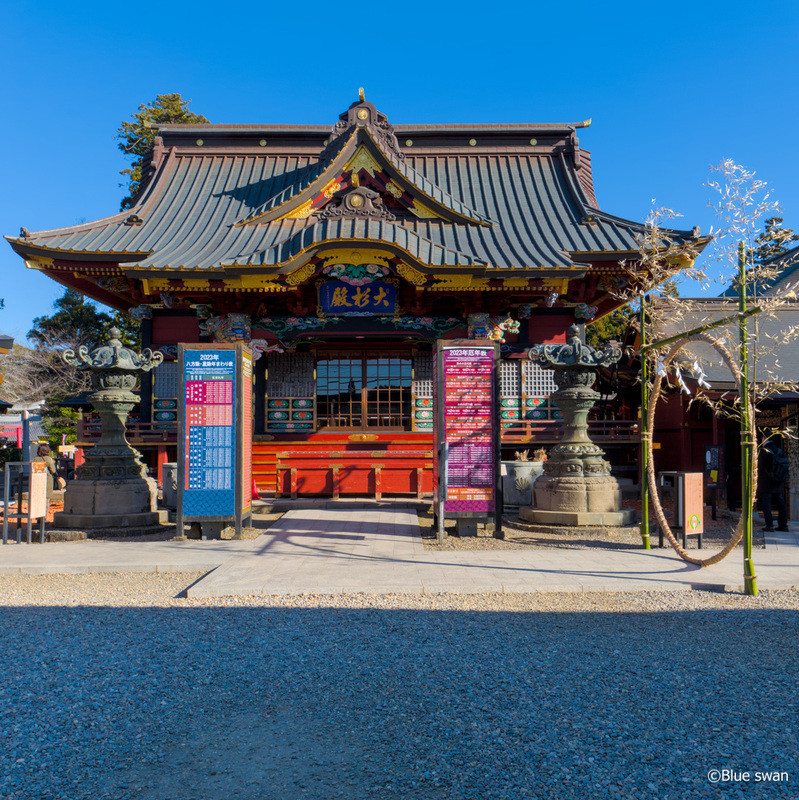
⑩ This is the worship hall.

⑪ I am in front of the worship hall.
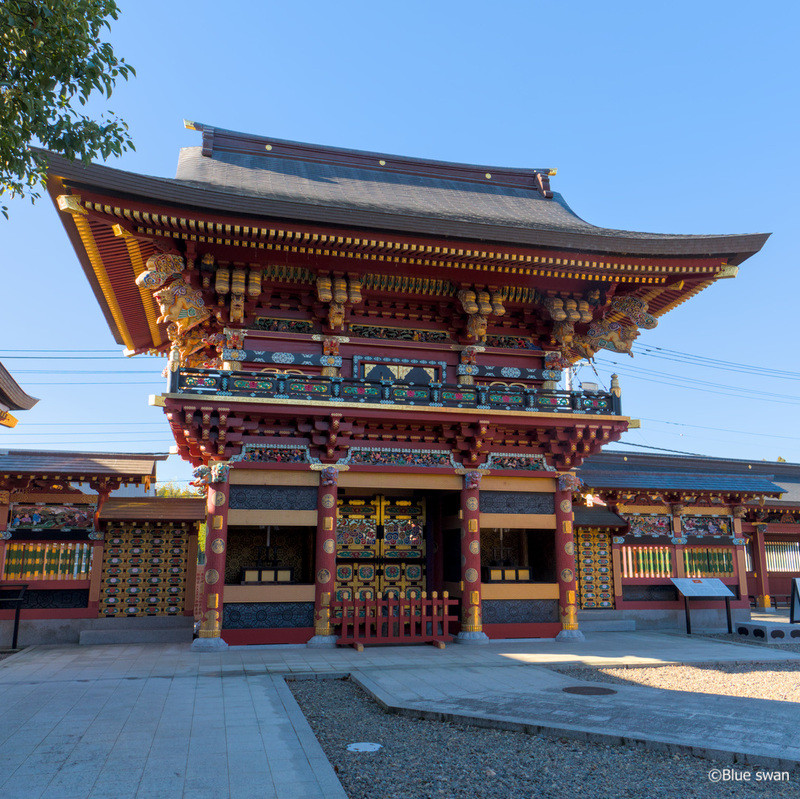
⑫ This is Kirinmon, which burned down in 1747 and was rebuilt in 2010.
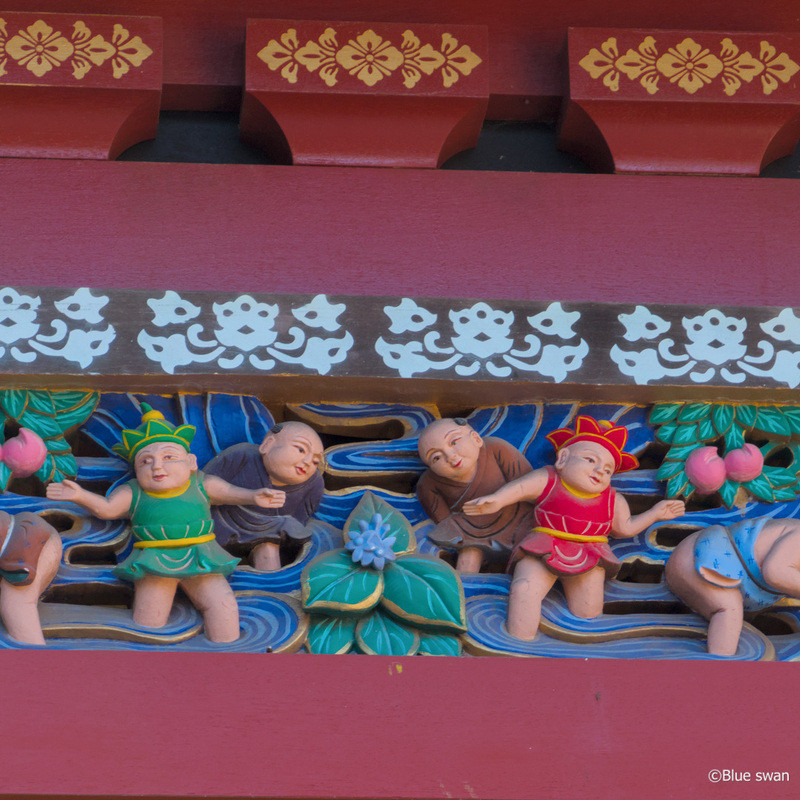
⑬ This is the sculpture of Kirinmon.

⑭ This is the explanation of Uho(禹歩,うほ). It is said that walking in a pattern shown on the diagram while holding an amulet (which you buy from this shrine) will bring you good luck and good health in mind and body. “Uho” is a special walking method that originated from the ancient Chinese king named U(禹).

⑮ This is the Uho funeral hall where Uho is performed. Walking along the guide is too difficult for me.
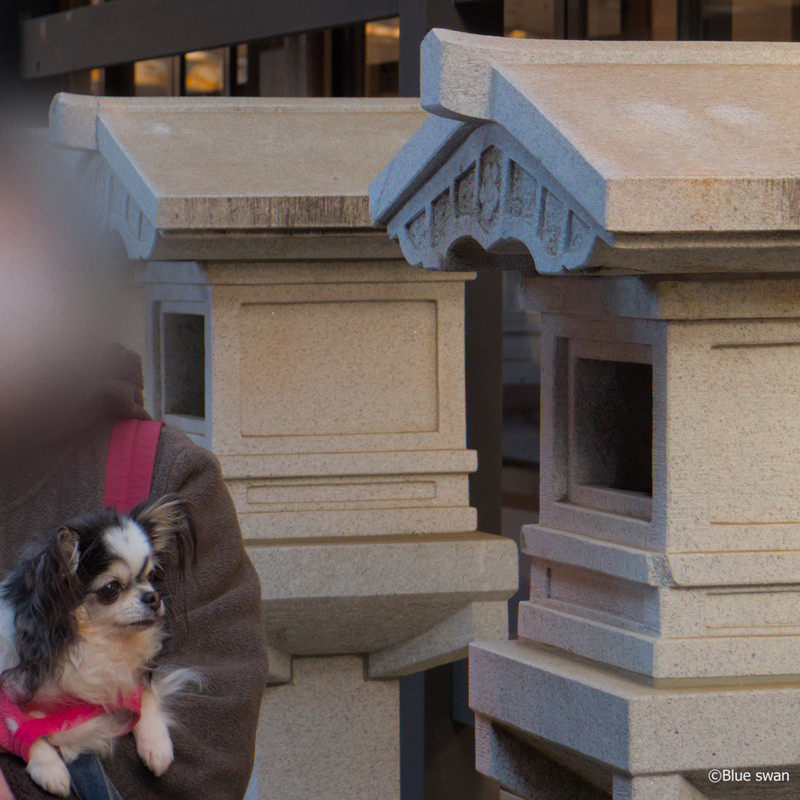
⑯ We’re moving forward to the lanterns. There is a restroom ahead.

⑰ A phoenix is painted on the golden wall of the restroom. It feels like Zipangu, the land of gold.
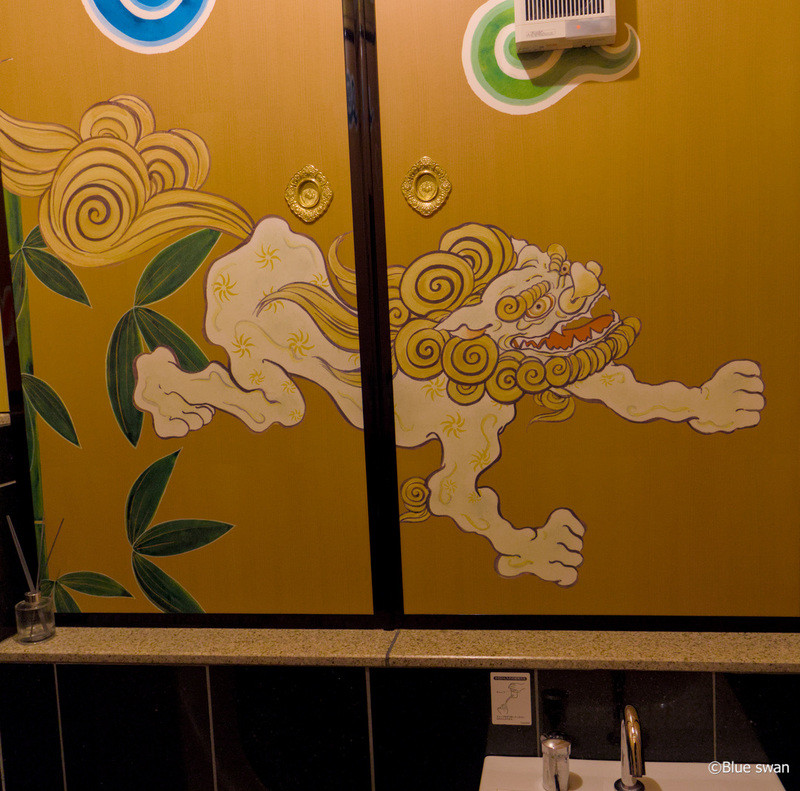
⑱ This is a lion painted on the golden wall of the restroom.
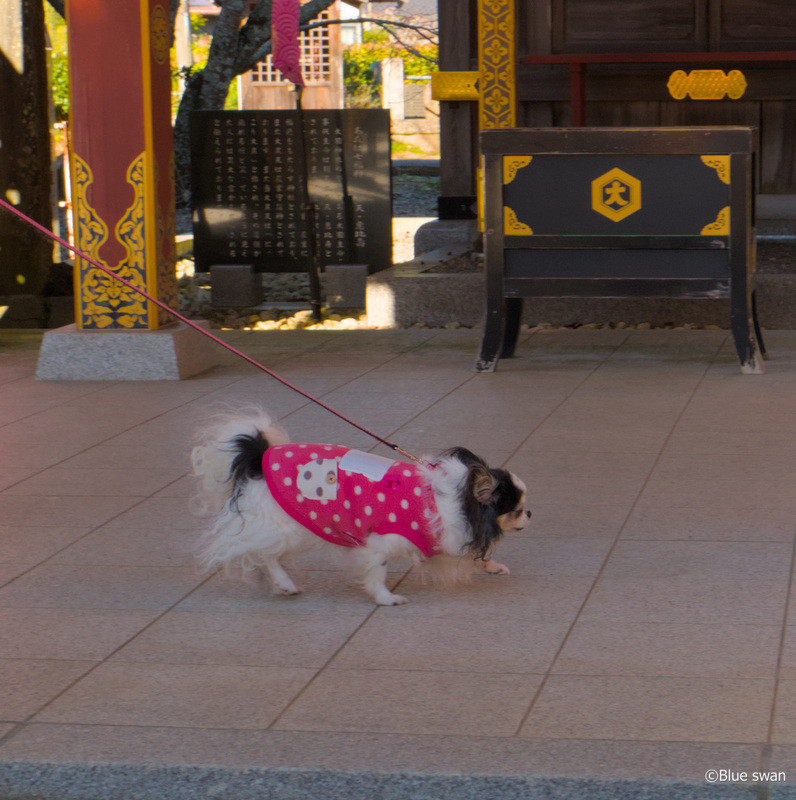
⑲ Now, I’ll walk back to the parking lot.

⑳ We are approaching the edge of the temple grounds.
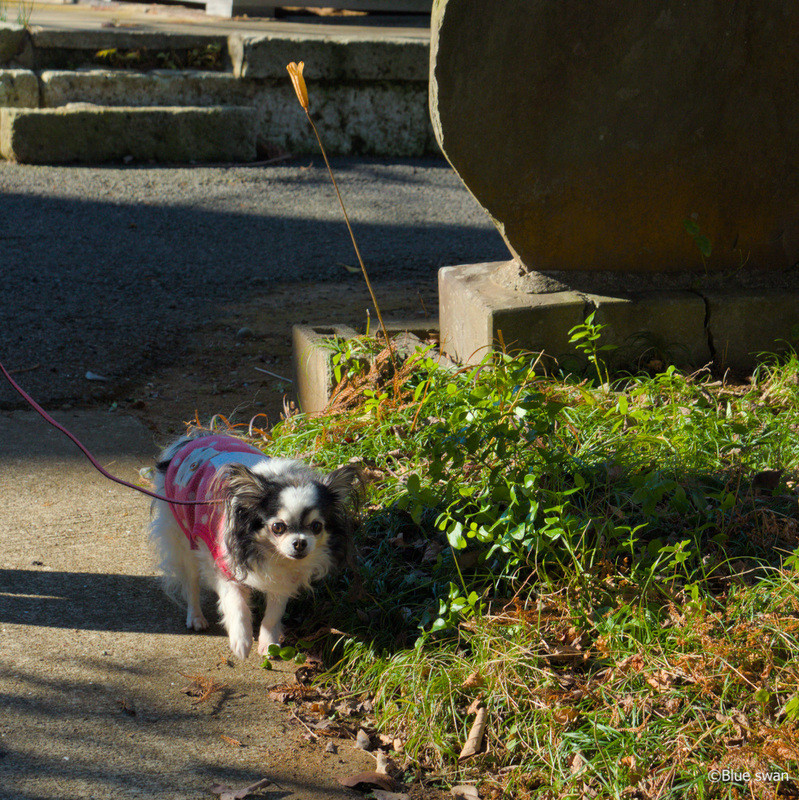
㉑ The parking lot is right there.
Osugi Shrine is in Aba, Inashiki City, Ibaraki Prefecture. It is the headquarters of approximately 670 Osugi Shrines in the Kanto and Tohoku regions. It is affectionately known as “Ambasama” and is visited by 500,000 people annually. ”Ambasama'' refers to a giant cedar that used to be a landmark, but it was destroyed in a fire and only the name remains.
The year-end grand purification(年越しの大祓) is an event held on Dec. 31st to exorcise the year's impurities. At this time, some shrines set up grass rings (茅の輪、ちのわ)just like they do on June 30th. Osugi Shrine also has a grass ring, so we went there to purify ourselves.
I wrote about the exorcism in chapter 346, so please refer to that chapter for the manner of passing through the grass ring.
Osugi Shrine is said to have been built in 767. It became famous during the Edo period thanks to a priest named Tenkai(天海).
Tenkai(1536-1643) was a high priest of the Tendai sect (天台宗) in the early Edo period, and as a close aide to Tokugawa Ieyasu, he was deeply involved in the imperial court and religious policies of the early Edo shogunate.
He presided over Tokugawa Ieyasu's funeral and decided on Ieyasu's divine name as ”Tosho Daigongen(東照大権現).''
During the Edo period, Tenkai opened Kaneiji(寛永寺), the family temple of the Tokugawa family, in Ueno, and Toshogu(東照宮), Ieyasu's mausoleum, in Nikko.
Tenkai placed Annonji Temple (currently Osugi Shrine) under the direct control of Toshogu Shrine. Osugi Shrine looks like Nikko Toshogu Shrine, so it is nicknamed "Ibaraki's Nikko Toshogu Shrine" and is similarly gorgeous.
Marco Polo (1254-1324), an Italian merchant and adventurer, published "The Travels of Marco Polo''. In the book, he wrote that Zipangu (Japan) produced a huge amount of gold, that palaces and private houses were made of gold, and that the floors were covered with thick gold.
After reading this book, Columbus set out on a voyage to find Zipangu and discovered America. The Zipangu that Columbus imagined may have been something like Osugi Shrine.

① This is “Negai Tengu”. ”Tengu refers to a long-nosed goblin, one of Japan's mythological creatures. “Negai” means your wish.

②This is “Kanae Tengu', which means that this Tengu will make your wish come true.

③ This is the second torii gate.

④ I’m standing next to ”Daikokuten”, who is known in Japan as a god of good harvest, good luck, career advancement, and improved financial fortune.

⑤ I am in front of the chozuya(手水舎).

⑥ The grass ring (Chinowa) has come into view.

⑦ I am in front of the grass ring.

⑧ I asked Mom to carry me.

⑨ I’m passing through the grass ring three times with Mom.

⑩ This is the worship hall.

⑪ I am in front of the worship hall.

⑫ This is Kirinmon, which burned down in 1747 and was rebuilt in 2010.

⑬ This is the sculpture of Kirinmon.

⑭ This is the explanation of Uho(禹歩,うほ). It is said that walking in a pattern shown on the diagram while holding an amulet (which you buy from this shrine) will bring you good luck and good health in mind and body. “Uho” is a special walking method that originated from the ancient Chinese king named U(禹).

⑮ This is the Uho funeral hall where Uho is performed. Walking along the guide is too difficult for me.

⑯ We’re moving forward to the lanterns. There is a restroom ahead.

⑰ A phoenix is painted on the golden wall of the restroom. It feels like Zipangu, the land of gold.

⑱ This is a lion painted on the golden wall of the restroom.

⑲ Now, I’ll walk back to the parking lot.

⑳ We are approaching the edge of the temple grounds.

㉑ The parking lot is right there.
